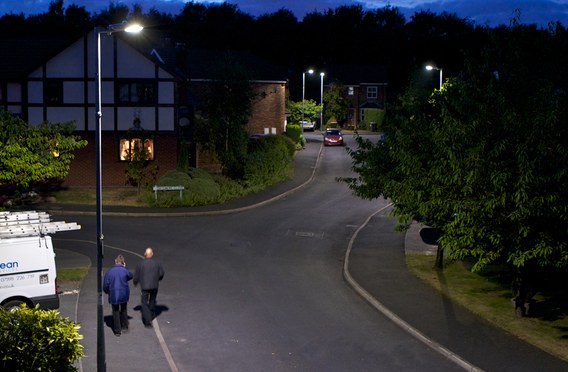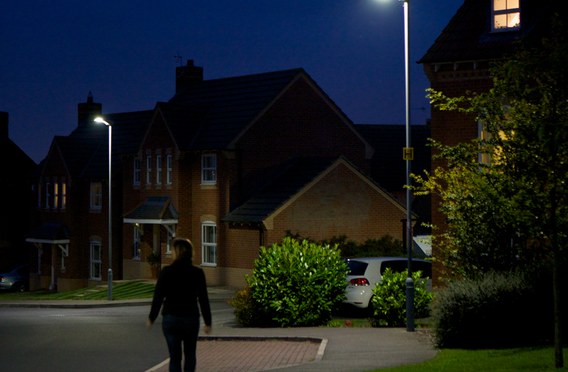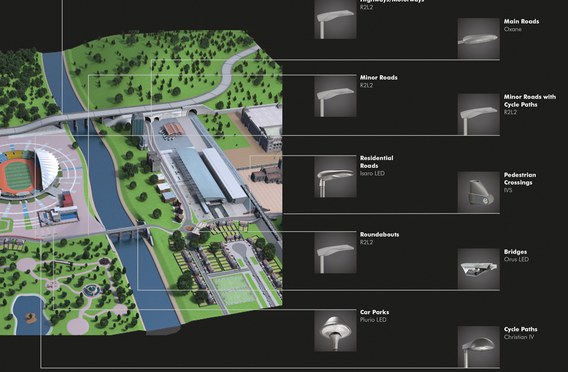Road Lighting Application Area in Focus: Residential Roads
Creating the right environment
Generally residential roads should be lit with light levels and colour rendering that enhances the neighbourhood and encourages people to go out at night without the fear of crime. Luminaires should have a good spacing window to allow for the considerable number of junctions or obstacles to column positioning. They should be easy to install, maintain and be resistant to potential vandalism. The luminaires should be energy efficient and reliable in function with lighting controls monitoring their performance, and when necessary bringing failures to the attention of maintenance teams. Care should be taken to ensure light nuisance is not caused to residential properties, but be aware some residents may be used to light spill providing access and security lighting to their dwelling. Luminaires that accept light guillotines may be necessary where the terrain will cause light through windows.
Taking control
Use one or more of the following control mechanisms:
- Photocells and time switches
- Presence detection
- Luminaire stand-alone dimming (from 2 to several levels) to suit both the user and project profile
- Cabinet control for a group of luminaires, via mains or control line
- Remote central management systems for individual control and monitoring, via powerline or radio frequency
Good practice
These roads are normally used by low speed mixed traffic where parked vehicles are common and column heights of 6m or less are frequently chosen. Lighting guidance is given in PD CEN/TR 13201-1 from S, A, ES, and EV classes defined in EN13201-2. Single sided layouts may be used to reduce installation costs although layouts may vary due to multiple access points to private car parks or properties. It is more common to light from back of path, allowing free movement to pedestrians, etc. The use of staggered layouts is common when parking lanes and wide footpaths are present. In applications where crime ratios are high and facial recognition is required, vertical and semi-cylindrical illuminance classes should be applied and the use of good colour rendering lamps to improve perception is recommended. Low glare lanterns should be considered to reduce light trespass onto adjacent residential housing. Vandal and impact resistant luminaires may be required. Lanterns can be themed or styled to suit the neighbourhood road and architectural layout. Lighting controls should dim slowly and avoid nuisance switching.
A good example of the above is our Salford, UK Case Study, which can be found here.
Along with our updated Road Lighting Application guide.



